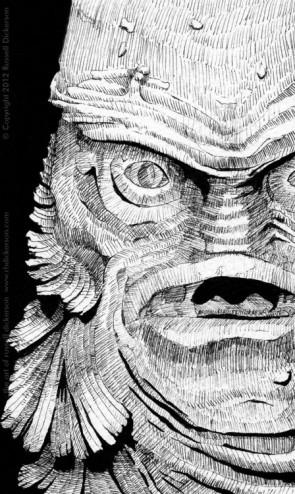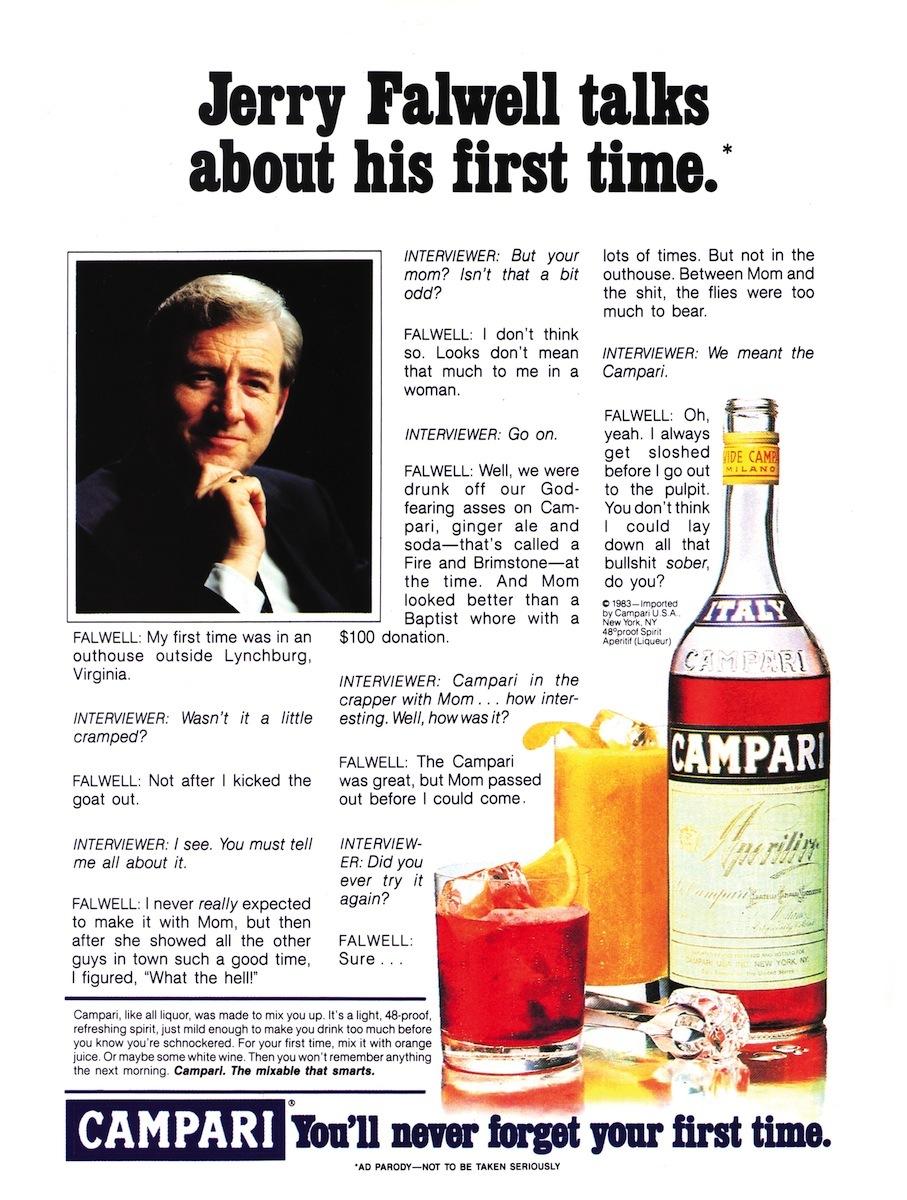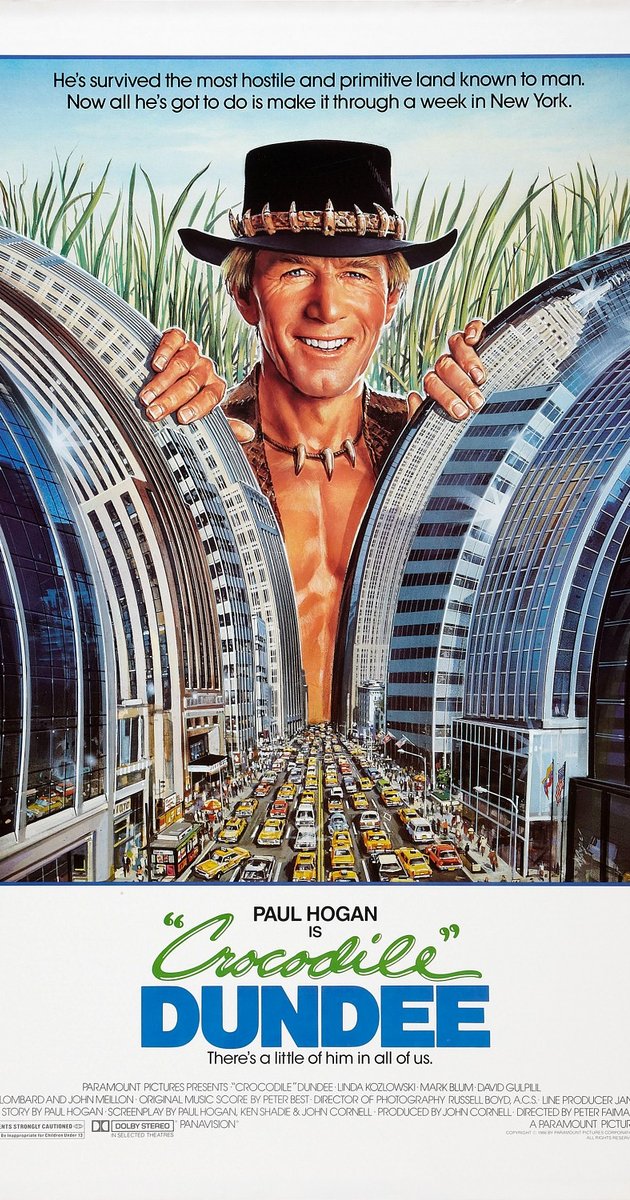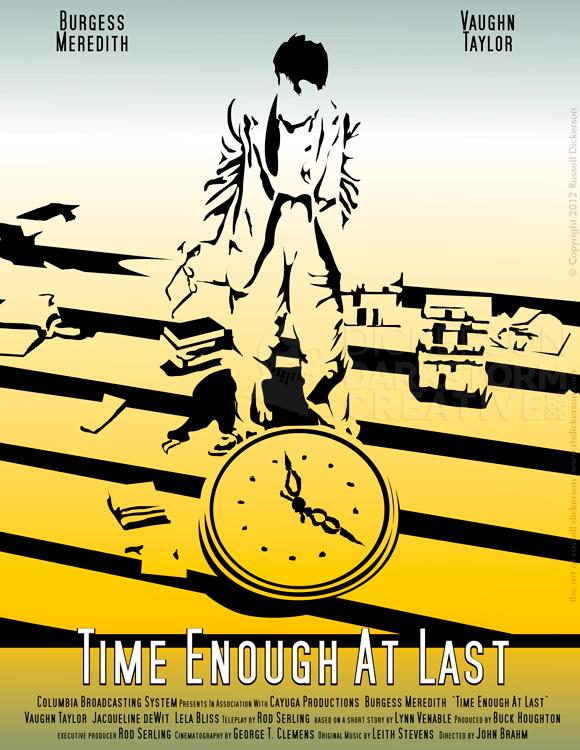A little while back, just before the big rush of my convention art show, I created a new small ink to try and sell. It was an ink version of the famous Creature From The Black Lagoon, which you can see down below on the right.
It turned out pretty well (or so I’m told by others), and it was fun to go back to a monster I had tried to ink before. The previous version didn’t fail, it was more like I changed my mind partway into it and created something different. But I wanted to come back to it, and needing art for the show gave me a good reason to.
I ran into a problem though with creating it. Simply put, I wanted it to be perfect.
| Originally published by Apex Book Company, June 2012 |
So I tinkered with it, for twice as long as it should have taken me. I spent well over a couple of hours on it, and, being only 4” x 6”, that was at least an hour too long. I just couldn’t bring myself to back away from the table, to keep adding to it.
To be fair, there are no rules really about how long art takes (other than when I’m up against deadline). For instance, the ink right after this one was Lon Chaney Sr.’s Phantom of the Opera, and he took less than an hour. The Creature has a bit more detail simply by his nature, but they were the same size. Over twice as long isn’t really the way things should be.
It comes back to something I heard at the Spectrum convention, being surrounded by so many artists that have seen the same things that I had. The topic of conversation had been the idea that a piece of art is never really finished, the artist only found a nice place to stop.
Which I agree with to a point, but I don’t think it’s as easy as that. Works of art, and I mean to include any creation from art, stories, and film, in that definition, certainly have a point where they should be considered finished. Often that’s due to time constraints, maybe a story is due by Friday and you have to send what you have.
There’s also the idea that any piece of art can be ruined by going too far. Take for example The Last Samurai, a decade-old film which I’m about to spoil the hell out of for you. Skip down a couple of paragraphs if you’d rather not have the picture ruined.
At the end of the film (skip down one more paragraph if you don’t want to know), our dashing (supposedly) American hero has survived, given the sword to the emperor, and narration tells us he went away to a better place. But the creators of the film tacked on another minute or two of video, showing us exactly, in silly detail, what happened after. Consequently, they ruined it for me.
They went too far with it (no spoilers, just ideas), which happens very easily to any kind of creation. It’s just one more brushstroke, or a couple more lines at the end of the story. It’s a sign that the creator didn’t know where that line to stop was, and they turned something great into something middling. Or worse, something hated.
 There are also those who feel they need to go back to a piece that’s perfect already, and start tinkering with it. I’m sure millions of Star Wars fanboys just cried out in terror, with a “NOOOOOOOOO”, and were then suddenly silenced.
There are also those who feel they need to go back to a piece that’s perfect already, and start tinkering with it. I’m sure millions of Star Wars fanboys just cried out in terror, with a “NOOOOOOOOO”, and were then suddenly silenced.
It’s that idea that we can make something we created before better. That we can somehow take the essence of our great works, or even our one perfect creation, and improve on it. It’s a Darth Vader scream here, or changing guns into walkie-talkies there, or even swapping who shot first. In the end though, it’s those little flaws, those little oddities in our creations, that make them what they are.
When The Creature From The Black Lagoon was staring up at me, when I could have added more lines or even some ink wash, I decided I’d found the line. I didn’t cross it, and I did what I nearly always do with a piece of art.
I called it finished, never to return.
It’s something I’ve trained myself to do over the years. Other than the situations where a client or publisher needs a change, if it’s a piece just for me I make a solid line in the sand and stop right there. Sure, there are few pieces that I’ve added some digital color. But by that point, that piece has transcended its ink origins and become a different digital work altogether.
Is it done? Probably not. There are probably other things that I could do to it. Some of things might even make the piece better. But it’s that line where I know things are good now, and any further brushstrokes push me to overwork it, to be closer to disaster. At that line in the sand, I sign it, fill in the information on the back (if it’s a traditional piece and not digital, of course), and then put it away in a dark file drawer since I’m not going to sell it anyway.
It’s been hard over the years, but I’ve learned that, once it’s considered “done”, I move on with the next piece. I know where the flaws are in that other piece, or where I might have added some other feature. Instead of going back, though, I head forward, and use that knowledge of the things I wanted to change for the next piece.
In the long run, I think that makes me a stronger artist. I go into the next piece remembering what did and didn’t work on the previous one, and apply those lessons. I can remember how an eye might have been slightly crooked, or there should have been more highlights, or less lines for the right texture.
I can look at the progression of my art, from the stick figures I do now back to just the random stick lines that I did before (possibly over-exaggerating), and know that those lessons have been applied.
It’s hard to draw that line in the sand, but I think it’s something that every creator has to learn. It’s not always easy, but it can be the difference between a beloved piece and one that folks ridicule.
Myself, I’d rather my work be beloved and remembered. All that takes is knowing, when the brush is in my hand, whether it’s really time to paint or not.


